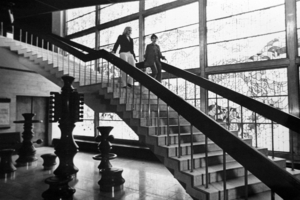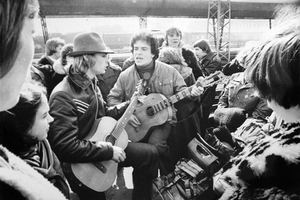"Socialist Realism, Capitalist Realism, and Documentary Photography: A Comparison of Illustrations from a Soviet Newspaper (1977) and a Global Lifestyle Magazine (2007)," in Mythology of the Soviet Land (Riga: Latvian National Museum of Art, 2009), 268-290. ISBN 9789984807225. Proceedings of the international academic conference Problems of Interpretation of the Art of Socialist Realism, Riga, Latvia, May 19-20, 2008.
Although the term “Socialist Realism” is mostly used to refer to painting, sculpture, literature, and film, the principles of the Soviet ideology and Socialist Realism are also reflected in the photography of the Soviet period. This can be seen both in press photography and in representative photography that made up the majority of photographic materials that were seen in the Soviet public spaces.
This paper focuses on press photographs that were published in Soviet Latvia between the late 1950s and late 1970s. I trace the application of some of the principles of Soviet Socialist Realism and offer a few parallels and comparisons between Soviet-era press photographs and the flourishing genre of the capitalist world, advertising photography. The paper is based on visual materials such as illustrated books about economy of Soviet Latvia, press photographs, and the photo chronicle that was delivered to newspapers in Soviet Latvia by the LATINFORM news agency on a regular basis under the title “Our Republic in Photographic Images.”
My comparison of Soviet-era press photos to advertising photographs from the capitalist world is based on the similar functions assigned to these images. The task of the Soviet press photograph was to create and uphold the impression the Soviet Union’s victorious progress. They served as an endless “advertising” of the Soviet state’s ideals—collectivism, superiority and achievements of the proletariat. In capitalist economy, commercial advertising photography serves similar goals: to create and uphold the impression of the “goodness” of capitalist economy. This comparison suggests that the media under any kind of state system or economy publish ideologically charged photographs, very often pretending that the images are actually something else, that they represent “truthful” and therefore highly believable evidence that has been photographed, i.e. collected by mechanical—objective—means.”



